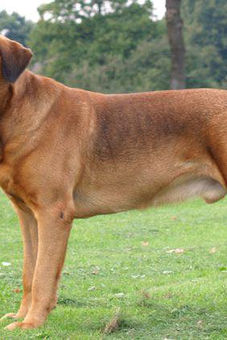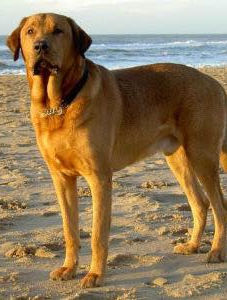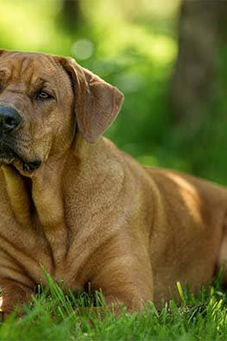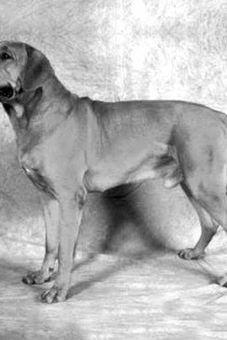
Breed -
Status
Purpose
Around From
Original Country/Kingdom
Broholmer
Alive
Herding and Guarding
1500
Denmark
Breed History
Broholmer. Modern photos are very difficult as there are less than 800 Broholmers, most of them living in Denmark
Fyn is a small Danish island situated between Jutland and Sjælland. The western coast is separated from the mainland by the Lille Bælt (Little Belt) and the eastern coast by the Store Bælt (Great Belt). The capital is Odense, hometown of famous writer Hans Christian Andersen.
The descendants of the Viking dogs were crossbred with Great Danes and English Mastiffs, the latter presented to the Danish Court by King James I (1566-1625) of England. In those times, the Danish Mastiff-like dogs were used for herding and guarding cattle – on farms and at the cattle markets in the cities – and protecting hearth and home.
During the 17th century, this Danish Mastiff-like dog was also a pack hound, especially used on royal hunting grounds. After the ban on parforce hunting, their numbers dropped rapidly. Niels Frederik Bernhard Sehested (1813-1882), game-keeper of the Danish King, archaeologist and living at Broholm Castle, started a breeding program to save the breed. During his travels throughout the country, he tried to find as many good examples of Broholmer dogs as possible, and gave a number of people a dog for free, providing they would breed a litter. The name of the breed, Broholmeren, in Danish – a tribute to the man who saved this dog from extinction – dates from the end of the 19th century.
The first dog show in Denmark was organized in 1886, in the garden of Rosenborg Castle. Family members of Sehested, still living at Broholm, met there, to write a breed standard. Broholmers have been recorded in the Danish stud books since 1887; in 1982, the breed was officially recognized by the FCI, which used the description from 1886, the only difference being acceptance of the color black.
Between 1859 and 1929, Broholmers could be seen in the Copenhagen Zoo as part of a breeding program; about 200 puppies were born there, all yellow colored. Manager of the Zoo was A. von Klein, who was the royal gamekeeper. During this period, black Broholmers were used as guard dogs in the Tivoli Gardens, Copenhagen’s famous amusement park. Still it was not possible to save the Broholmer. Its numbers dropped dramatically because of inbreeding, distemper and viral infections. There were some registrations in 1910, and Broholmers were entered at a dog show around 1939, but at the outbreak of World War II, the breed was finished. In 1940, the last Broholmer was entered in the stud book.
In 1974, the Danish Kennel Club published “Following the track of the Broholmer” in its paper; the piece was written by J. Weiss. Somebody from Helsinge, Sjælland, who owned an 11-year-old male without a pedigree, responded. Weiss travelled to Helsinge to see this dog. The height of the dog was 31 inches, its color dark-yellow and had no pedigree. The owner was given permission to enter the dog at a show under the name Gamle Bjørn Fra Helsinge (Old Bjørn from Helsinge). The judges were in complete agreement: this dog was a real Broholmer! Thanks to a great deal of publicity, more representatives of the breed were traced, descendants of the dogs bred in the zoo some 50 years before. In 1983 there were 35 purebred Broholmers with 50 percent black coats and 50 percent yellow coats. They possessed six generation pedigrees showing purebred Broholmers. The Broholmerselskabet (the breed club) celebrated their 25th anniversary in 1999 with a show at which more than 100 Broholmers were entered. Today there are less than 800 Broholmers, most of them living in Denmark. Breeding is done according to strict rules and only since January 1998 has the breed been exported in very small numbers.























